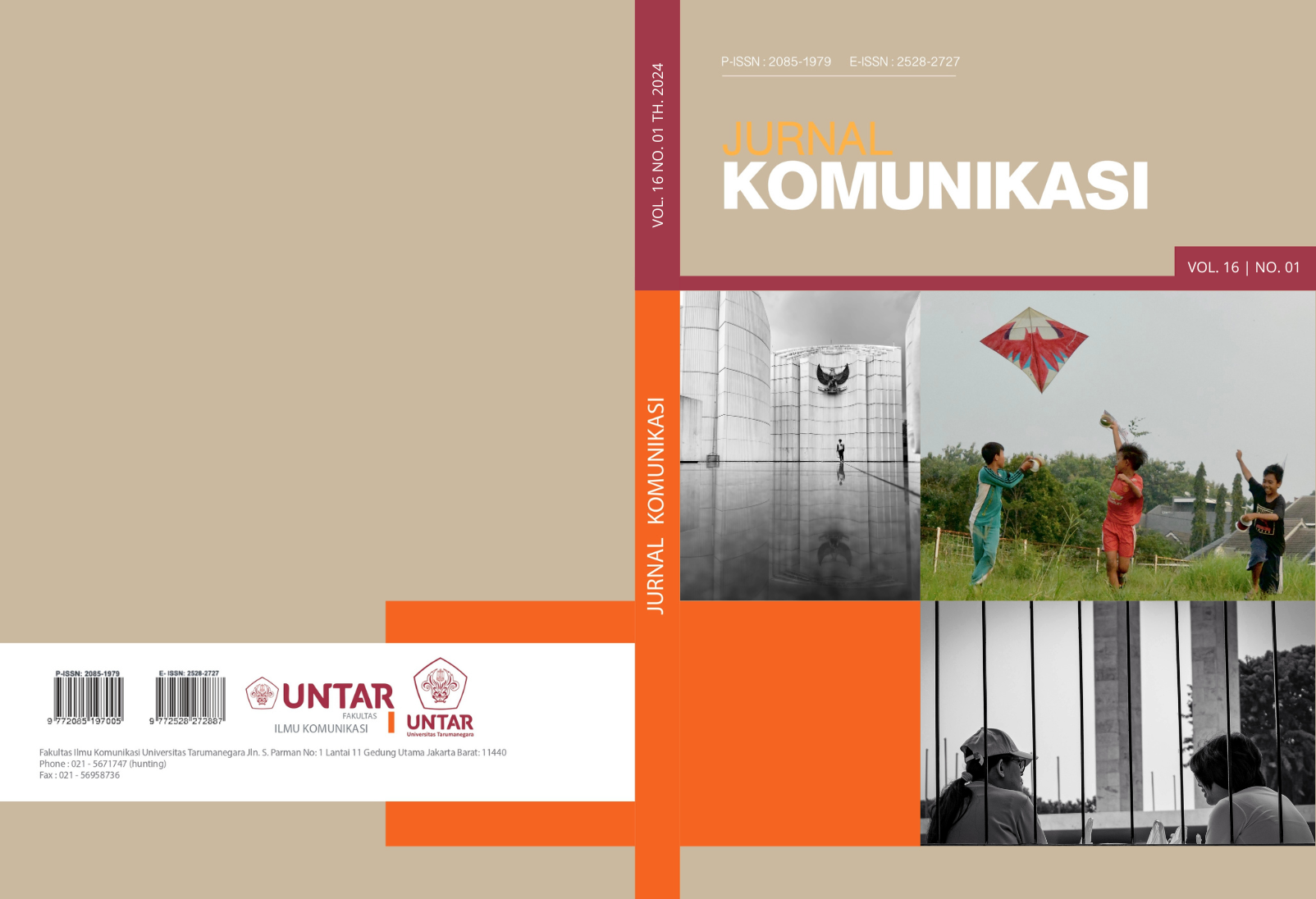Journalist-Victim Relationship: Analysis of Cyber Media Reporting on the Land Conflict of the Sunda Wiwitan Indigenous Community
Main Article Content
Abstract
The relationship between journalists and sources influences reporting on conflicts in media. The news media's portrayal of conflicts can shape public opinion, which in turn can influence policy decisions. Governments and other stakeholders often pay close attention to media coverage and public reaction when making decisions related to conflicts. This study analyzes how the relationship between journalists and sources, in this case the victims from the Sunda Wiwitan indigenous community in Cigugur, West Java, in online media, relates to the land conflict and how it influences the resolution of the case. The researcher chose the theme of Sunda Wiwitan in relation to online media and conflict because the land conflict involving the Sunda Wiwitan indigenous community in Cigugur, West Java, is an issue that has received widespread media attention. Online media, with its fast and broad reach, often covers this conflict, although frequently in the form of short news pieces (hard news). This study uses a qualitative approach, employing a mixed method of content analysis, in-depth interviews which involving journalists and members of Sunda Wiwitan Community. The researchers analyze 113 news articles from national and local online media about the Sunda Wiwitan land conflict from 2020-2022. This study aims to examine how the relationship between victims in land conflicts and influential journalists affects media framing and agenda-setting.The research shows cyber media are interested to cover the issue as it carries news value of conflict and produce more news in form of hard news that features. The communication established between journalists or the media and victims or sources from the Sunda Wiwitan indigenous community influences the formation of media agendas and framing.The significant attention from online media and diverse sources influenced policy decisions regarding the Sunda Wiwitan land conflict.
Article Details

This work is licensed under a Creative Commons Attribution-ShareAlike 4.0 International License.
This work is licensed under a Jurnal Komunikasi Creative Commons Attribution-ShareAlike 4.0 International License.References
amsi.or.id. (2019). Dari 47 Ribu, Baru 2.700 Media Online Terverifikasi Dewan Pers. Diakses 15 Februari 2023.
Atanesyan, A. (2020). Media Framing on Armed Conflicts: Limits of Peace Journalism on the Nagorno-Karabakh Conflict. Journal of Intervention and Statebuilding, 14(4), 534–550. https://doi.org/10.1080/17502977.2020.1780018
Bbc.indonesia.com. (2020). Sunda Wiwitan: Pembangunan makam dilarang karena “khawatir musyrik”, masyarakat adat keluhkan ’diskriminasi di rumah sendiri. Diakses 20 Juni 2021.
Christensen, B., & Khalil, A. (2023). Reporting Conflict from Afar: Journalists, Social Media, Communication Technologies, and War. Journalism Practice, 17(2), 300–318. https://doi.org/10.1080/17512786.2021.1908839
Cruikshank, S. A. (2018). Cheaper than a goat: U.S. newspaper and television coverage of the Southern Sudan conflict. Newspaper Research Journal, 39(2), 220–231. https://doi.org/10.1177/0739532918775679
Geiß, S. (2022). The Agenda-Setting-Effects of News Factor Exposure: A Field Study Comparing the Transmission Paths and Impact of Issue Exposure and News Factor Exposure. SAGE Open, 12(2). https://doi.org/10.1177/21582440221091259
Herfroy-Mischler, A. (2015). Silencing the agenda? Journalism practices and intelligence events: A case study. In Media, War and Conflict (Vol. 8, Issue 2, pp. 244–263). SAGE Publications Ltd. https://doi.org/10.1177/1750635215584285
Koltsova, O. , & P. S. (2020). Agenda divergence in a developing conflict: Quantitative evidence from Ukrainian and Russian TV newsfeeds. Media. Media, War & Conflict.
Krippendorff, K. (2018). Content analysis: An introduction to its methodology (4th edition). Sage Publications.
Liliweri, A. (2018). Prasangka, Konflik dan Komunikasi Antar Budaya. Prenada Media.
Loisa, R. S. EH. , J. A. , dan L. F. (2019). Media Siber, Apara, dan Pemberitaan Keberagaman. Jurnal Aspikom.
Lynch, J. M. A. (2005). Peace Journalism. Hawthorn Press.
Massey, Z. B., & Miller, C. H. (2018). Case studies on interethnic conflict: A theoretical integration. In International Journal of Intercultural Relations (Vol. 66, pp. 130–147). Elsevier Ltd. https://doi.org/10.1016/j.ijintrel.2018.04.006
McIntyre, K. (2016). What makes “good” news newsworthy? Communication Research Reports, 33(3), 223–230. https://doi.org/10.1080/08824096.2016.1186619
Merdeka.com. (2020). Kisah Pangeran Madrais, Pendiri Agama Sunda Wiwitan di Jawa Barat.
Regus UNIKA St Paulus Ruteng, M. (2020). Interreligious Conflicts in Post-Authoritarian Indonesia: Assumptions, Causes, and Implications. Jurnal Politik, 5(2). https://doi.org/10.7454/jp.v5i2.1013
Romli, A. Syamsul. (2020). Jurnalistik Online.
Şahin, S. (2022). Journalism in conflict-affected societies: Professional roles and influences in Cyprus. Media, War and Conflict, 15(4), 553–569. https://doi.org/10.1177/1750635220987746
Suryana, A. (2018). Indonesian presidents and communal violence against non-mainstream faiths. South East Asia Research, 26(2), 147–160. https://doi.org/10.1177/0967828X18769393
Susanto, E. H., Loisa, R., & Junaidi, A. (2020). Cyber media news coverage on diversity issues in Indonesia. Journal of Human Behavior in the Social Environment, 30(4), 510–524. https://doi.org/10.1080/10911359.2019.1708525
Teguh Irfan. (2017). Mengenal Sunda Wiwitan dan Agama Sunda yang Lain . Tirto.Id.
Tyson, A. (2013). Vigilantism and Violence in Decentralized Indonesia. Critical Asian Studies.



